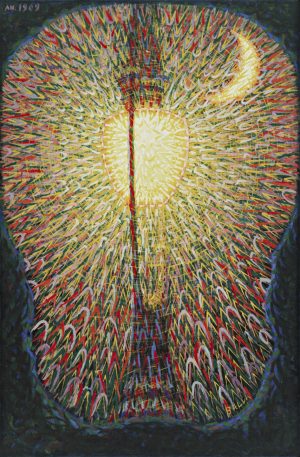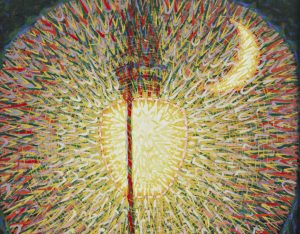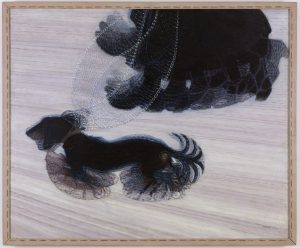Giacomo Balla, Street Light

Loving the future, hating the past
As a member of the Italian Futurist movement, Balla was passionately invested in making art that reflected “the future”: that is, the increasingly industrialized and technological world of the early twentieth century. Futurism swept onto the European art scene in 1909, when an Italian poet named Filippo Tommaso Marinetti published “The Founding and Manifesto of Futurism” in newspapers in Italy and France. In it, he declared that reverence for history and past artistic traditions needed to be abandoned in order to move society and art decisively into the modern age. In embracing modernity and violently dismissing Italy’s honored artistic heritage (“Set fire to the library shelves! Turn aside the canals to flood the museums!” he wrote), Marinetti initiated one of the most bombastic and aggressive avant-garde movements of his time. The writer prized new technology rather than tradition, and sought to create a climate of violent revolution rather than one of comfortable stability. The artists who gathered around him aimed to make art that would showcase modern mechanical developments like airplanes and automobiles, especially because they could provide the viewer with new experiences like the speed of these new modes of transport.
Balla’s Street Light, in this sense, is a sort of demonstration piece for the Futurist movement. Balla has rejected traditional subject matter in this painting, and instead has painted an object that is forthrightly modern and technological: one of the new, electric street lamps that were just being installed at this time in Rome, where Balla lived. The introduction of electrified city lighting must have been an exciting sign of technological advancement for the Futurists, and also a powerful symbol of how the ancient city of Rome was finally abandoning its past and entering the modern age.

The small crescent moon Balla included in his painting is also an illustration of Futurist ideas. Just as the street light stands for the future in the picture, the small moon stands for the past. In part Balla means this in a literal sense. In the past people relied on the moon to see at night; in modern times we rely on electricity. But Balla is also alluding to a number of Marinetti’s writings in which the moon was used as a symbol for the artistic traditionalism that the Futurists wanted to destroy. Summed up in his slogan “Let’s kill the moonlight!” Marinetti attacked the gentle light of the moon and its long association with traditional romance and sentimentality. He condemned past generations of artists and poets as “lovers of the moon,” and called for a more modern and aggressive symbol—like a racing car or a train—to take its place. Balla’s Street Light, which overpowers the moon’s dim light, serves as a visual equivalent to these ideas.
Street Light seems to have been enthusiastically received by Balla’s fellow painters when it was completed. In a group manifesto written in 1910, titled “Futurist Painting: Technical Manifesto,” the work is showcased as a superb example of Futurist subject and style: the group exalts the “electric lamp, which, with spasmodic starts, shrieks out the most heartrending expressions of color.”

After the Futurists visited Paris together in 1911, several of them adopted aspects of Cubism, though they altered the technique to focus more clearly on Futurist concerns like modern technology, movement, and speed. Balla, however, began to earnestly explore how one might paint movement in other ways. At first, in a series of paintings in 1912, he showed movement by painting many small increments of time in a series, as in Dynamism of a Dog on a Leash (above). Later, in 1912 and into 1913, Balla entered an exploratory abstract phase, painting the movement of cars driving, birds in flight, and even the movement of light itself, via geometric shapes, dynamic lines, and abstract patterns of color.
- Dr. Jennifer Bethke, "Giacomo Balla, Street Light," in Smarthistory, March 9, 2017, accessed March 15, 2023, https://smarthistory.org/balla-light/. ↵

